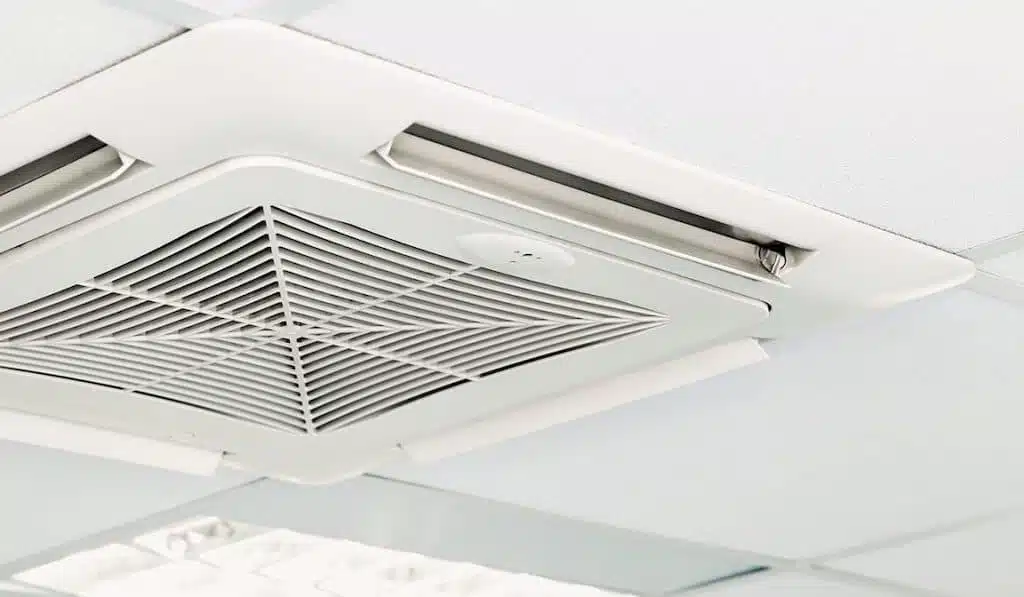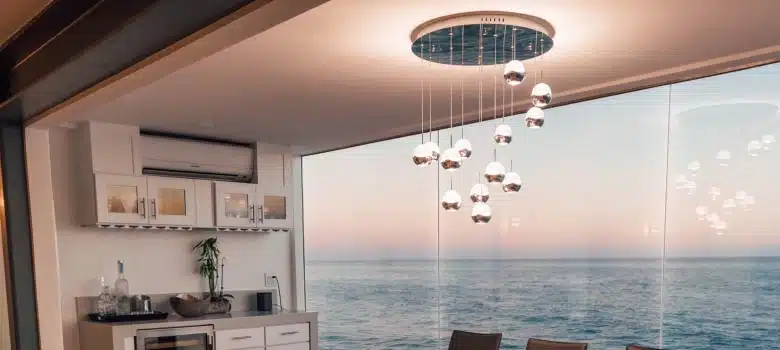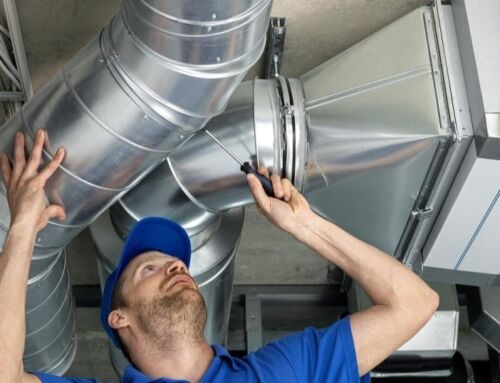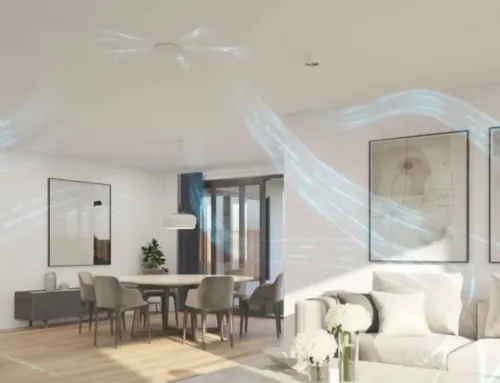Choosing the best type of air conditioner can be a confusing affair. There are a number of different brands, models and configurations to choose from, and figuring out which of these is best suited to your house will require you to think about a number of things.
How big is your home? How many floors do you have? How many rooms do you want your air conditioner to heat or cool?
If you want to learn more, check out our other resources:
1. How Much Does Air Con Cost In Sydney?
2. Pros and Cons of Air Con You Need to Know
4. What Size Air Con Do I Need?
5. How Much Power Does An Air Con Use?
The Best Type of Air Conditioner System Depends On The Type Of Your Home
Different types of AC systems are best suited to certain types of homes. Here are different options for apartments, single storey and multi-storey houses, so you can choose the best type of air conditioner.
To help you make the right choice, let’s take a look at the best type of air conditioner options for different types of homes.
Apartments
If you want to get an AC for your apartment, there are a few things you’ll want to consider that will affect what kind of system you get. First of all, whether you rent or own your apartment will have a big impact on the choice you make.
If you rent, you may be limited to what kind of system you can have, and in this case, a window, wall or portable unit might be the most suitable. These are self-contained, meaning they contain the compressor and the evaporator in a single unit.
If you do own your apartment, you will have more freedom when choosing what kind of system you go for.
However, you will still have to consider the regulations set by your apartment’s body corporate committee before you jump in and buy one. The above might still be suitable.
Otherwise, a low-profile wall mounted or floor standing split system is probably the most appropriate option, seeing as apartments tend to be smaller and more open plan than houses. If you want to control the temperature in multiple rooms, a multi-split system would be suitable.
Single Storey Houses
When it comes to houses, let’s assume you own yours. If you do not, then again you will have to discuss with your landlord what’s possible. In some circumstances, your landlord will be fine with you installing an AC unit in your home, as this will increase the value of the house.
They may even consider paying for some of the installation themselves. If you own your home, then it’s entirely up to you what kind of system you choose. What kind of house it is will have the biggest impact on what kind of unit you choose.
For single storey homes, single split systems are an excellent choice.
These are area-specific, meaning they are limited to cooling/heating a single room (depending on the layout of your home this may not be an issue for you, for example, if you have an open plan home and the unit is in a central area).
They are a very cost-effective way to control the temperature in a home.
If you have a larger home or want to control the climate in multiple rooms, but do not have space for multiple outdoor units, a multi-split system is a great choice.
These systems air configured so that several indoor units (which can differ in size, capacity and type) are connected to just one outdoor unit.
Multi-Storey Houses
Standard multi-split systems can provide heating and cooling for up to 5 rooms and allow you to control room temperatures individually, making them ideal for multi-story homes. They are also quite efficient, making them the most economical option for big places.
For larger luxury homes, there are deluxe multi-split systems that can heat/cool up to 15 rooms. Despite their powerful output, the outdoor units are compact, making it a great solution for modern homes with limited space.
For larger multi-story homes, ducted air conditioners are another great option.
These are the top-of-the-line air conditioners and, like multi-split systems, they also heat/cool multiple rooms. But rather than being specific to particular rooms they treat the air in the whole house. You might have heard these being called central heating or central cooling.
This type of system is concealed and less obtrusive than the other systems we’ve mentioned. Generally, they are more expensive to run but with the main advantage of being able to cool a larger area.
Some ducted systems allow for separate zones, meaning you have temperature control of individual rooms.
However, it is important to note this feature will incur more costs. All in all, ducted AC units are a quiet and effective way to ensure climate control in a large multi-story home.
Understanding the Energy Star Rating When Choosing the Best Type of Air Conditioner
Everyone has seen the energy star ratings stuck on the front of appliances, but not everyone knows exactly what they mean.
Why Are The Stars There and Where Did They Come From?
The energy star rating system is a joint government and industry initiative that was established to help consumers make more informed decisions about how energy efficient the products they were buying are.
By increasing awareness and transparency about energy consumption, the program also succeeded in increasing demand for more efficient products, thus driving the quality and environmental sustainability of the technology.
The system was introduced in the late 1980s, first in New South Wales and Victoria. It wasn’t until 1992, however, that it became compulsory for products sold all around the country.
This is when it became regulated by the Australian government.
Understanding the energy star rating system is very important when buying the best type of air conditioner.
You may shrug these off as being overly technical – but the system is actually quite easy to understand. Let’s take a look!
Is the Energy Star Rating System the Same For All Appliances?
You will have seen the energy rating sticker on everything from fridges to dishwashers to air conditioners.
But are they all the same? The answer is no.
Why?
The most simple explanation is that every appliance uses energy differently – a 4-star AC unit will not consume the same amount of energy as a 4-star TV.
What Does The Energy Star Rating On An Air Conditioner Mean?
You may have noticed that the rating system on air con systems are a little harder to read because they have two stickers – one for heating and one for cooling (if the unit is a cooling only device, and then it will only have a blue sticker).
As you may have guessed, the more stars, the more energy-efficient the unit is. The maximum possible rating for each side is 10 stars.
If the product is rated above 6 stars for heating or cooling, it will show a ‘super efficiency rating’, which goes up to 4 stars (6 + 4 = 10).
However, there is more to it than this. Not all air conditioners are the same: some are larger than others and require more power.
So how do you compare the star rating relative to other units? You look at the numbers below each rating system.
These are the capacity output and power input readings – basically how much heating and cooling the unit can produce and how much power it needs to run respectively.
When comparing star rating, you’ll want to be comparing systems that have similar capacity output and power input readings.
So How Do You Choose The Best Type of Air Conditioner System?
This may all seem a little confusing, especially when you throw money into the mix. Obviously, you will want to choose the most energy efficient system possible, but this will also mean spending more money. So how do you choose the right system?
It’s important to remember that units with lower ratings aren’t poor quality units. For a product to be rated at all, it needs to pass rigorous efficiency tests, so the base rating of 1 star is actually quite efficient. It only gets better from there. So it’s really up to you!
Contact Us Today
If you are thinking about buying an AC system, give us a call today. From installations to repair services and maintenance, we pride ourselves on providing fast and efficient service of the highest quality. If you’re looking for a quote, please don’t hesitate to get in touch today.
We are based in the Inner West. However, our operations span the greater metro area, including the Eastern Suburbs, Lower North Shore and South West. We always respond quickly and aim to be on-site as soon as possible.







